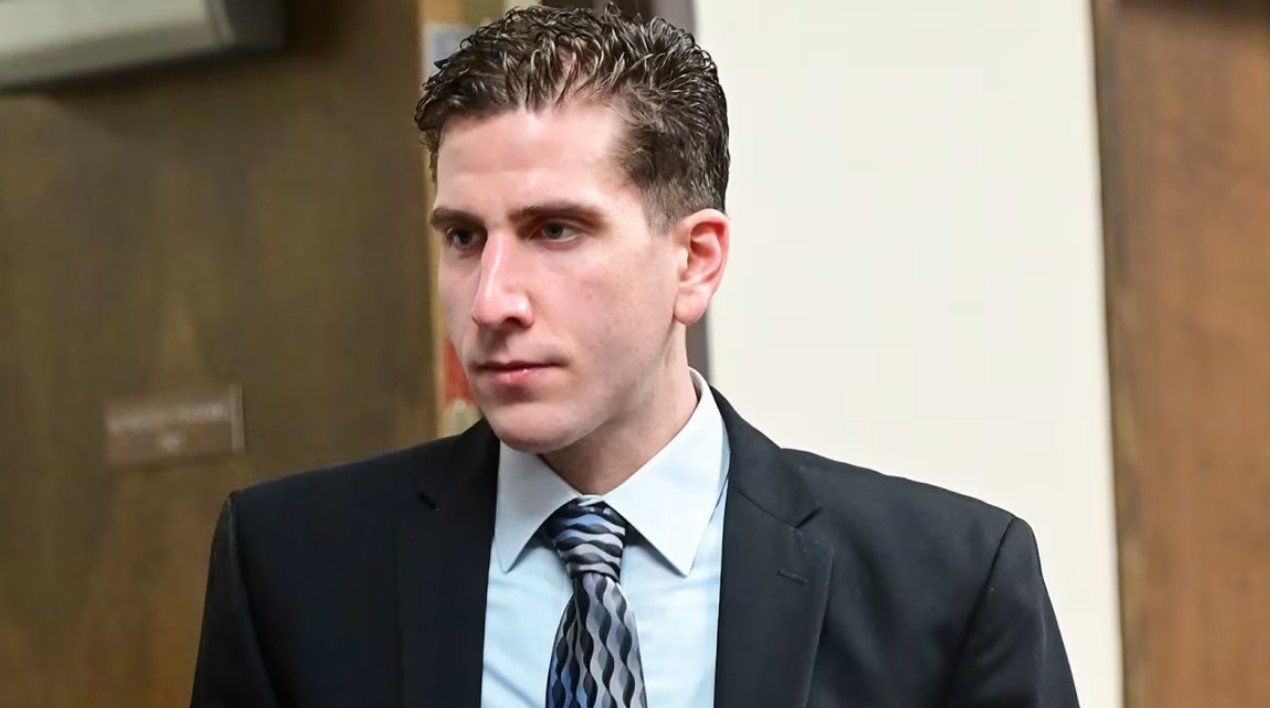
The Shocking Bryan Kohberger Guilty Plea | What We Still Don’t Understand
Now That He Said Yes, The Mystery Feels Even Deeper
Bryan Kohberger’s guilty plea sent shockwaves—not just because of the admission itself, but because of the strange, suffocating stillness that clung to the courtroom as he delivered it.
He sat stiff and motionless at the defense table, his posture so rigid it seemed his body had chosen the third instinct of fight, flight—or freeze. Each “yes” he uttered was clipped and deliberate, echoing across a legal and psychological minefield.
Around him, the air felt thick, charged with conflicting emotions. On one side of the gallery, the Goncalves family radiated grief and fury—Christi Goncalves’ eyes welled with pain as she stared ahead, while her sister dabbed tears with a tissue.
To their left, prosecutor Bill Thompson looked weary, his face lined with the burden of explaining a plea many found unthinkable.
On the defense side, Anne Taylor maintained a calm, almost maternal presence beside Kohberger. She smiled faintly at him from time to time, her eyes softening as if guiding a child through an impossibly complex task.
Kohberger responded in kind, glancing at Taylor after nearly every question, as though seeking silent permission to speak. His compliance was striking—robotic even.
Kohberger rose with military precision to take his oath, his rigid movements betraying an internal tension.
Judge Steven Hippler told him he didn’t need to stand for each answer but appreciated the respect to the court. Was Kohberger expressing politeness, or a carefully cultivated performance? Some courtroom observers suggested he craved control over his image, while others wondered if the reality of his crimes had finally frozen him in place.
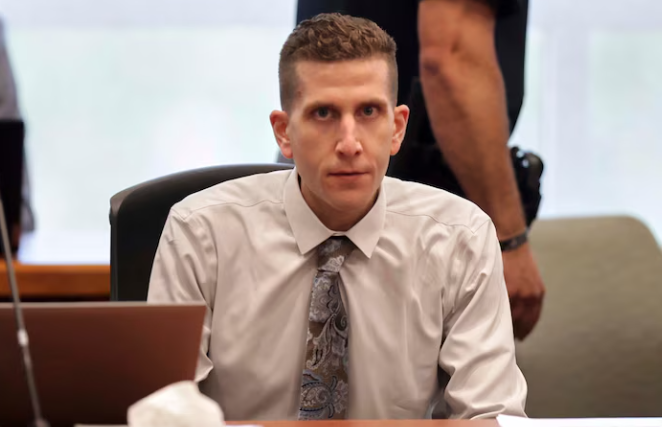

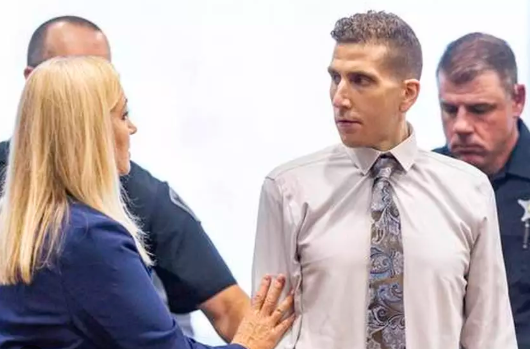
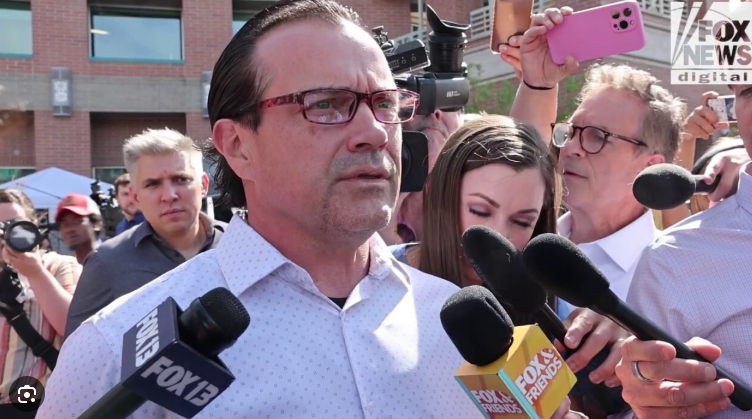
Meanwhile, outside the courtroom, Steve Goncalves staged his own act of protest. He had led his family into the courthouse but refused to set foot in the hearing itself. “I’m not sitting in there with him,” he said sharply—referring not to Kohberger, but to Bill Thompson, the prosecutor he blames for accepting what he sees as a cowardly plea deal.
Goncalves has been vocal in his anger, accusing Thompson of lacking the spine to push for trial and even suggesting that Kohberger’s father flew out to Washington in 2022 knowing his son had done something terrible. On the family’s Facebook page, Steve warned followers: “Bill Thompson will retire on this case and slither away.” To him, this plea wasn’t justice—it was betrayal.
A Stern Warning to the Public
The Colloquy: Precision and Pressure
Hippler set the tone with sharp, deliberate remarks. The judge revealed he had only learned of the plea deal on Monday afternoon—a shock that derailed weeks of preparation for a trial of unprecedented scope. And with an edge in his voice, he addressed the Goncalves family directly, but not by name, condemning the campaign they’d organized to flood his office with calls and emails urging him to reject the deal.
“I want to point out that there have been calls by some for the public to contact me and my office in an attempt to influence my decision-making in this case,” Hippler said firmly. “This has been extraordinarily disruptive for court staff… and it is highly inappropriate.”
Hippler reminded everyone that judicial decisions are not swayed by public sentiment.
“This court will never take into account public sentiment in making its decisions,” Hippler warned. “I have not read any of the numerous messages nor listened to any voicemails. Those have all been forwarded to security or law enforcement.”
There was no delicate balance in his words—only a blunt reminder that grief could not justify attempts to sway the judicial process.
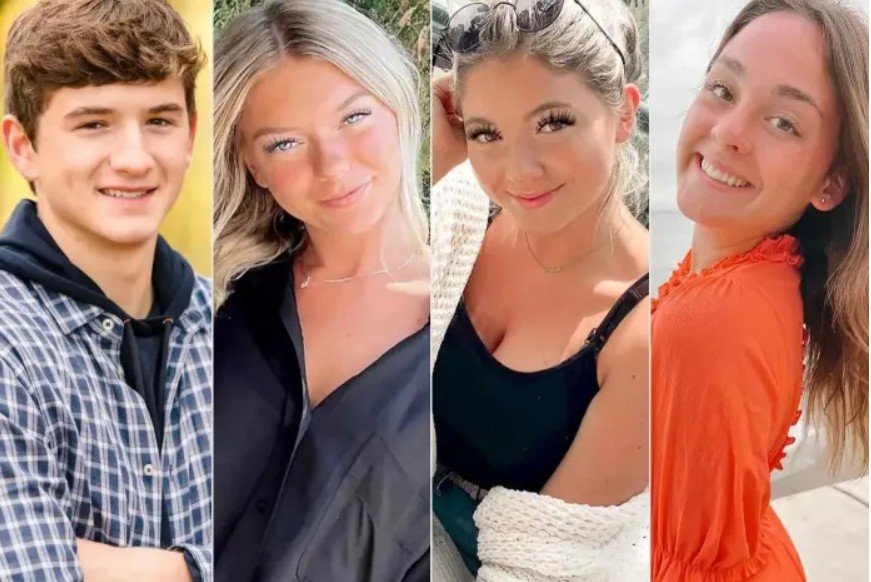
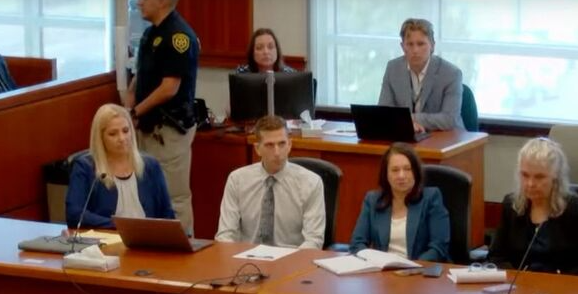
Image Credit: Law and Crime YouTube Video
Document Source: Idaho.gov Courts
As Hippler was informed of the change in plea, he and his staff were preparing for a massive trial, ready to summon 10,000 Ada County citizens for jury duty. That work came to a screeching halt when the sudden plea blindsided the court.
“Prior to that time, I was under the belief this case was proceeding to trial,” Hippler said. “We were continuing preparations for what would have been one of the most complex jury processes in Idaho history.”
Hippler noted that once the plea became known, it was critical to move quickly—not only to avoid wasting resources on jury selection, but to ensure the plea was secured before any obstacles arose.
Judge also stated that the court is not bound by this agreement, did not have to adhere to the sentence imposed in the agreement, but theoretically could only reduce the sentence. In addition, Kohberger can not ask for leniency.
Judge Steven Hippler treated the plea deliberately and poignantly:
First to Anne Taylor:
“Have you been able to do all the discovery you feel necessary?” “Yes, your honor.”
“And have you informed your client of the importance of providing the court truthful and accurate answers in taking this plea today?”
“I have.”
Then to Kohberger:
Judge Hippler first began by stating the following: “I want to make sure your plea is given voluntarily, and I want to make sure that you actually committed the crimes to which you’re pleading guilty because I don’t want you to plead guilty to a crime you didn’t commit.”
Hippler continued by asking Kohberger if he was under the influence of any substances. “No”. Then, he asked if he was thinking clearly today. Kohberger responded affirmatively.
Judge then asked him if he understood the sentences agreed upon, fines, restitution, and other consequences in the plea agreement. Kohberger stated that he understood.
For the second time, Judge reiterated: “I’m not bound by the plea agreement, but the plea agreement is for the maximum on each count. Do you understand that I’m not bound by the plea agreement?” “Yes”.
“Has anyone told you to be untruthful in answering my questions today?” “No.”
“Are you pleading guilty because you are guilty?”
Kohberger, in a measured tone: “Yes.”
The judge pressed further, ensuring Kohberger understood the weight of his words. No promises had been made. No threats. No misunderstanding could be claimed later.
Judge then asked him about each charge and if Kohberger went into that house on that night… and did he stab, kill and murder… each person?”
Kohberger: “Yes.”
This wasn’t a quick “guilty.” It was a meticulous walk-through of the alleged crimes, leaving little room for ambiguity—and no room for retreat.
Other than yes, no, guilty, Kohberger said no other words.
The Evidence: Solid or Shaky?
After the guilty plea, prosecutor Bill Thompson delivered a recitation of its factual basis :
DNA found on a knife sheath matched Kohberger.
Cellphone data showed his device pinging near the crime scene “nearly two dozen times.”
Surveillance footage caught his vehicle circling the area before and after the murders.
Prosecutors may have been cementing a factual narrative in the public record. But to critics, it felt defensive, as if they were countering months of doubt cast by skeptics.
But Thompson’s presentation wasn’t all ironclad. At several points, he hedged, admitting gaps in the state’s case:
“Now, I will acknowledge also we do not have evidence that the defendant had direct contact with 1122 or with residents of 1122, but we can put his phone in that area on those times.”
“The weapon itself, the knife, has not yet been recovered.”
“I can tell the court that the defendant’s apartment in Pullman was searched as well as his office. Spartan would be a kind characterization. And there was virtually nothing there. Nothing of evidentary value was found.”
To critics, these admissions underscored that most of the case was built on circumstantial evidence. Was this long recitation meant to solidify the narrative—or defensively preempt questions about the strength of the prosecution’s case?
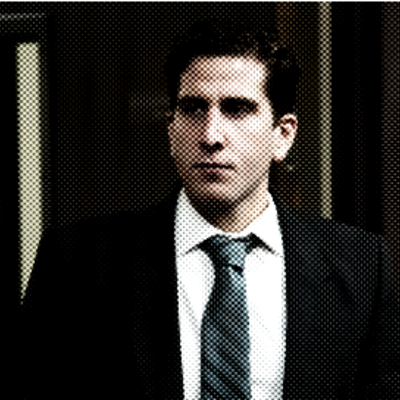
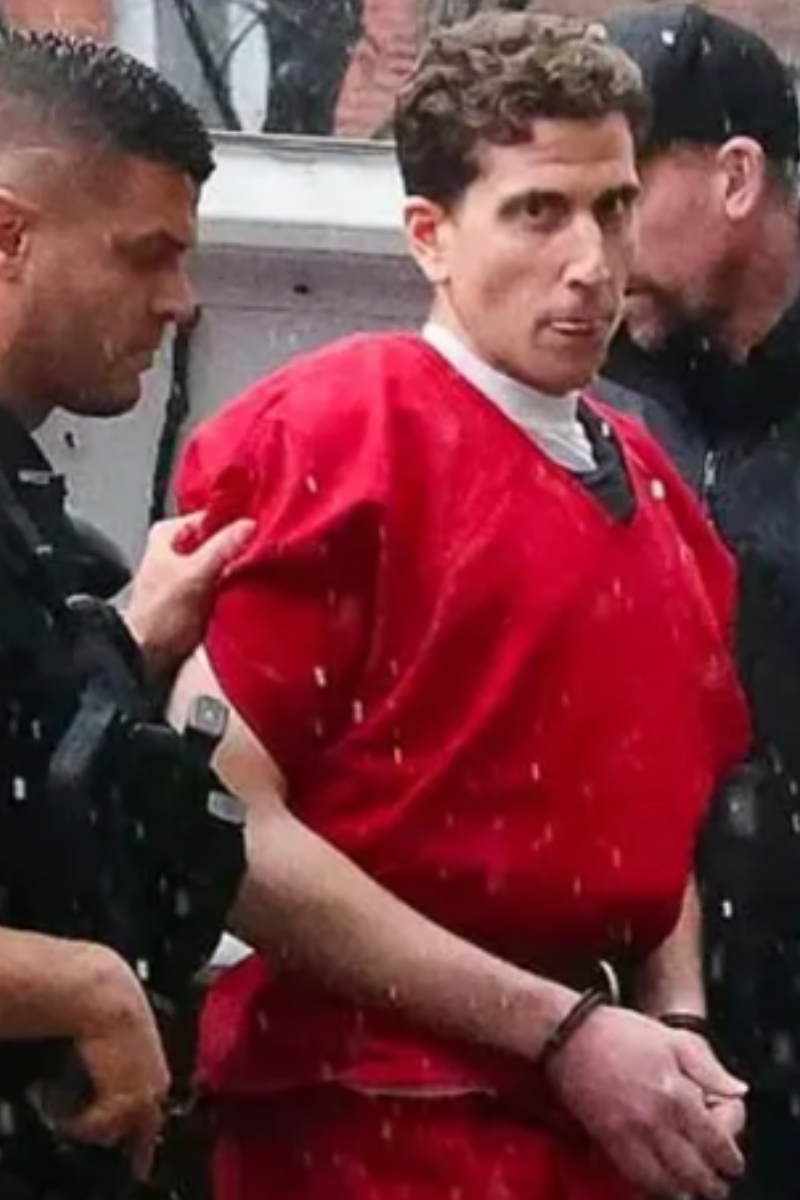
Emotionless and Controlled
Unlike Ted Bundy, Wade Wilson, or Taylor Schabusiness, there was no dramatic courtroom meltdown, no breakdown, no tears. Just cold, precise compliance.
Yet those watching closely saw another dynamic at play: Anne Taylor’s maternal guidance. She smiled at Kohberger throughout, as if encouraging a nervous child, and he seemed to look to her for reassurance before answering key questions.
It begs the question: Did Kohberger fully understand what he was doing? Or was he performing compliance for appearances? Some pundits believe his behavior is about control—carefully curating how he is perceived. But others suggest he may lack insight into the gravity of his crimes, despite acknowledging them.
Autism, Psychopathy, or Both?
Autism alone rarely predicts violence. Many on the spectrum are passive, not aggressive. In fact, those on the spectrum are more likely to become victims, not perpetrators of violence.
A co-occurring psychopathic condition could explain Kohberger’s emotional detachment, manipulative control, and silence.
Experts debate whether such a combination physically alters the brain—or whether environmental factors (like trauma) are more likely.
Did Kohberger meltdown in private? Did he quietly internalize rage? Or is his calm exterior his true nature? We may never know.
A Normal Life, a Chilling Act
To his parents, he was grounded. To his sisters, normal. He had no criminal record, no history of violence.
But he studied forensic science. He bought a Ka‑Bar-style knife online. And now he’s pleaded guilty to brutal, meticulously executed stabbings.
It’s a sickening reminder: sometimes deeply disturbed individuals look like scientists.
Bryan Kohberger family’s Pennsylvania-based legal representation Amori & Associates LLC released the following statement:
“In light of recent developments, the Kohbergers are asking members of the media for privacy, respect, and responsible judgment during this time. We will continue to allow the legal process to unfold with respect to all parties, and will not release any comments or take any questions.
We ask that you respect our wishes during a difficult time for all those affected.”
What’s Still Unclear
Why plead guilty now—after three years of steadfast denial? What was the thing that tipped the scales?
Was this the moment of surrender or a strategic collapse under pressure?
Why the new look? Kohberger’s hair was freshly cut military style, and appears to be lightened. His brows were thinner and lighter.
What was the reasoning behind Judge Hippler’s notable softer tone?
Can autism + psychopathy explain this calculated behavior?
Will attorneys Anne Taylor and Bicka Barlow issue statements? Will they continue pro bono—or retreat?
Will Bryan make an allocution at sentencing?
Will Bryan ever speak?
These are questions no plea deal can answer. The story changed form today—not shape.
What Comes Next?
Sentencing is set for July 23.
In the lead-up, expect:
Sentencing memoranda
Victim impact statements
Possible defense commentary or filings about post-conviction strategy
The Bottom Line
Yes, the facts match.
But the central mystery remains: why now? why like this? why him?
This plea resolved nothing. It created new questions. And until those are answered, we should resist the impulse to move on.

Related Articles
Judge Garnett Warns DOJ: Public Comments May Violate Court Rules in Mangione Case
New York, September 24, 2025 — In a scathing order issued today, U.S. District Judge Margaret M. Garnett ruled that officials at the Department of Justice may have breached court rules by making public statements about Luigi Mangione’s case — statements that defense...
Terrorism Charges Dropped for Luigi Mangione
On September 16, 2025, a New York judge (Gregory Carro) dismissed two terrorism‐related murder charges against Luigi Mangione. Specifically, the charges struck were: ➤First-degree murder in furtherance of terrorism under state law. ➤Second-degree murder as a crime of...
Why Karen Read’s $1.4M Prosecution Expense Is Justified
When Norfolk County released invoices showing that Karen Read’s second trial cost taxpayers more than $1.4 million, critics pounced. But is that number really excessive? Not when you compare it with other high-profile, expert-heavy prosecutions. Here’s why the expense...

